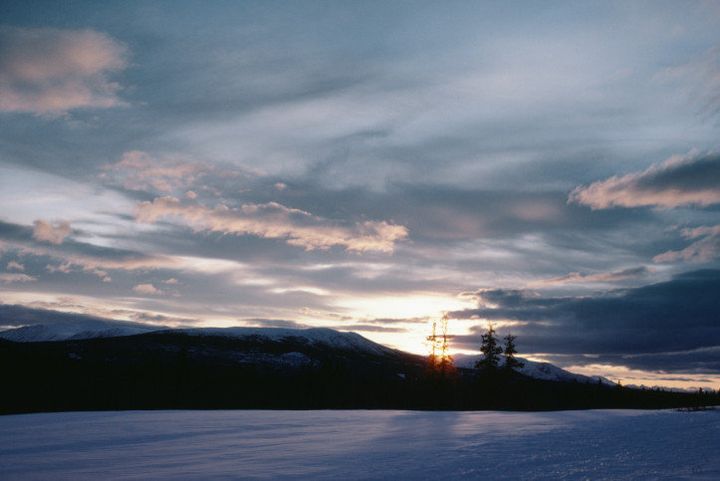
This week leading up to the Winter Solstice is the darkest of the year. True, the week following the solstice is just as dark, but the energy is different. After the solstice, the dark gets a tiny bit lighter each day as the world as we know it on the Northern Hemisphere turns toward spring. But now, pre-solstice, we are spinning further and further still into the dark. And it is so very, very dark.
The light has been steadily retreating each day since the summer solstice, the longest day and shortest night of the year. Tip toeing slowly, silently away. The decrease has been so gradual that we barely noticed the almost imperceptible shift, the subtle loss, until the autumn equinox when the light of the day and the dark of the night were of the same duration. Equinox in Latin means "equal night."
Come the fall, there is no denying the apparent disappearance of the sun. It certainly has been getting darker and darker. The ever more indirect rays of light skim by overhead at an almost horizontal angle, their energy and warmth barely reaching us below. Their glow goes weak and wan, a diluted wash. Insipid. Depressing. All season long, the sun has continued on its wayward course, receding ever further south. Further and further away from us. And now here we are standing in the dark.
The Winter Solstice, the shortest day, the longest night of the year, is as dark as it gets. The sun is then at its nadir, the furthest southern limit of its range, its terminus. And there it seems to want to stay for a while. At the solstice, the sun rises and sets at the identical time day after day and the length of the daylight hours remains the same. The sun stands absolutely still, motionless, riveted. It has stopped retreating, and yet hasn't begun to come back. Solstice in Latin means just that -- "the sun stands still." Pausing, it hovers in pregnant hesitation before it gets back on track again, resting before it begins its annual return trip across the equator into the Northern Hemisphere for its homecoming. Back to us waiting here, hoping, longing, craving.
Tromso, Norway, population 40,000, situated on the Arctic coast just two hundred miles south of the Arctic Circle, is the furthest north settlement of any size in the world. The winter sun sets there in November and doesn't rise again until late January. This sunless period is called by the citizens, Mórketiden, the murky time, and is marked by dramatic increases of mental instability, physical illness, domestic violence, suicides, arrests, alcoholism, drug abuse and poor school performance. One resident explained, "Morketiden brings out the worst qualities in people: envy, jealousy, suspicion. People get tense, restless and fearful. They become preoccupied with thoughts of death and suicide. They lose the ability to concentrate and work slows down. People talk about the light constantly and long for the sun to come back."
We, too. We miss the sun, and winter is only just about to begin. It will be long months before we can expect to smell the advance of spring in the air again. But the consolation is that even though the cold season is just starting, the sun will soon turn its face toward us and begin its return approach. The light will return in its wake, increasing constantly so that by the vernal equinox the light of day will once again be equal to the dark of night. And it will keep increasing until the summer solstice when the sun will again stand still -- this time for three days at the northern pinnacle of its path.
But in the meantime it's damn dark out there. The days have shriveled to a skeleton slice of light. The frozen nights are endless. The mornings are pitch black. These are dim, drab, dismal times. The Earth Herself is congealed with cold. Dark death and Arctic gloom surrounds us. And there is nothing too much we can do about it.
Best, then, during these dark times, to go inside and seek the vivifying energy within our own deepest selves. Let us each be a sun, casting light and radiating warmth wherever we go. Soon enough the days will be brighter.